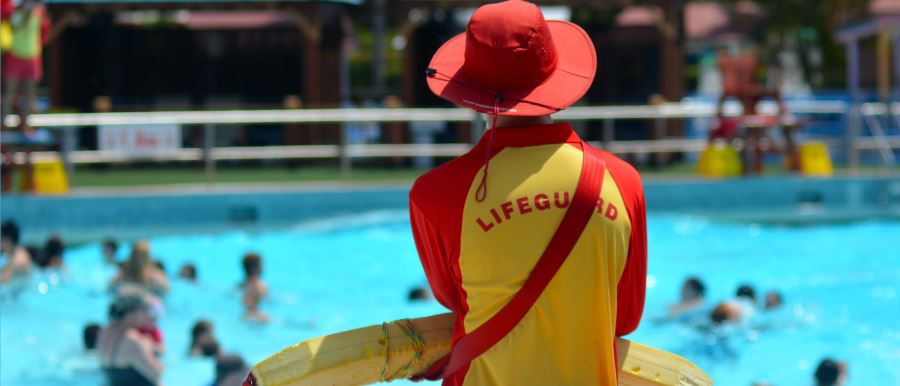
Scanning is the systematic visual observation of an aquatic facility, its patrons and their activities. Lifeguards observe patron behaviour and look for signs that could result in an emergency.
Effective scanning is an integral part of aquatic supervision, but it can be difficult in a busy pool with many distractions, lots of noise and large numbers of patrons to watch.
Scanning strategies — the 4 'P's
1. Position
It is important to position yourself so you can see majority of the pool and patrons. This is often tricky due to the layout of the facility and obstructions that block your line of sight, so seeing all of the pool and patrons is not always possible all of the time. Moving around the pool and positioning yourself at higher points or closer to higher-risk areas is often required to effectively supervise the facility.
2. Posture
Maintaining a positive and alert posture not only looks professional to patrons but keeps your mind alert and body active. Changing positions every 5 minutes from sitting, standing and roaming will change your view and prevent your mind wandering and becoming unfocused. Not all facilities allow lifeguards to sit, so managing and changing your posture throughout the day will ensure you stay alert and maintain a professional appearance. Moving around will also get your blood pumping faster, increasing oxygen and nutrients to the brain which will help your mind to stay alert!
3. Pattern
It can be hard to keep track of all patrons in busy pools. By strategising your scanning into different patterns you can keep your mind alert and maintain a focused scan. Change the way you scan every 5 minutes by using different techniques such as circular, rectangular, up-and-down the lanes or joining the dots to keep yourself focused. Since we usually read from left to right, scanning from right to left can improve your concentration by forcing the eyes to move in a different direction to what they do automatically. Head counting or grouping patrons is another way of keeping track of who is in the pool and what level of swimmers they are.
4. Patrons
Scanning patrons and taking a mental note of the types of patrons you are supervising can keep your mind active and prepare you for the types of emergencies that may occur. Knowing the age groups, swimming abilities, or special needs of your patrons you are supervising will assist your mental preparation in the event of an emergency.
Be sure to promote the Watch Around Water message at your facility to ensure parents are supervising and keeping within arm’s reach of their children, to assist in maintaining effective supervision within the facility.